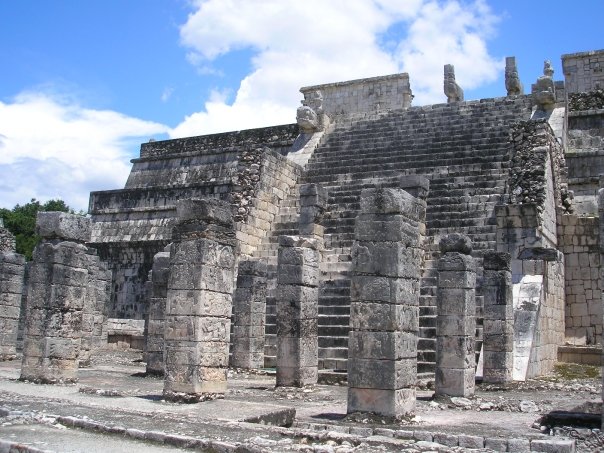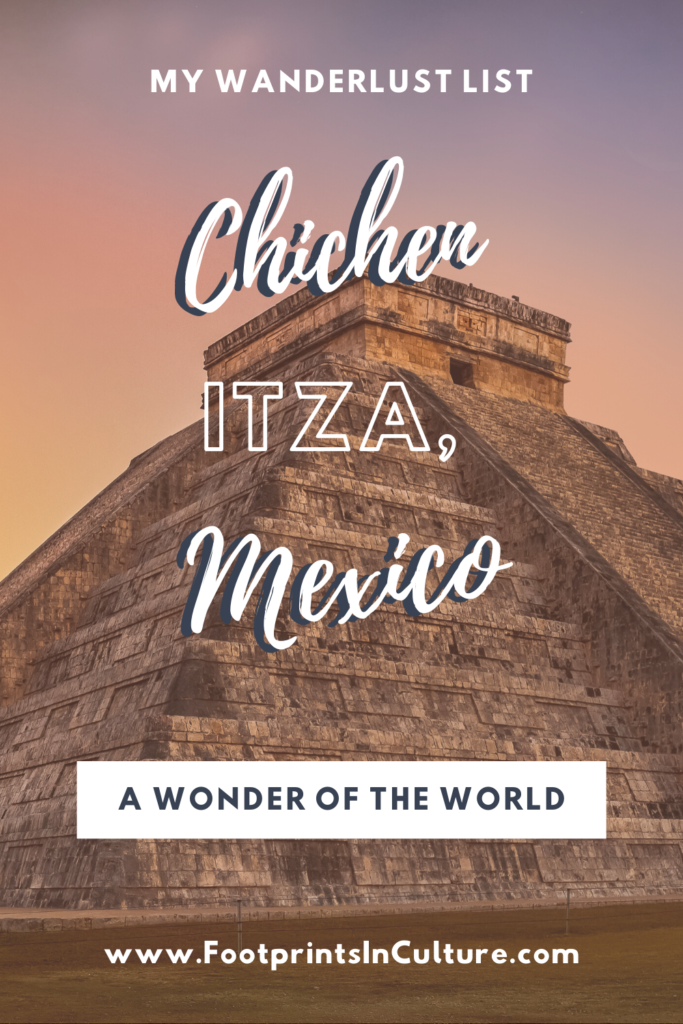This post contains affiliate links. I only recommend services/products that I use and love. Please read my disclosure for more info.
“At the edge of the well of the Itzas” (translation of Chichen Itza)
Once one of the greatest Mayan centers of the Yucatan Peninsula, Chichen Itza is now a UNESCO Heritage site and one of the seven wonders of the world. Believe it or not, Chichen Itza is only a 2.5 hour drive from Cancun. Chichen Itza is often represented by the Temple of Kulkulkan (El Castillo) – the temple of the Mayan feathered serpent god. This temple is quite popular and is usually the photo to take when visiting. But did you know about the natural phenomenon that occurs at this temple twice each year?

The phenomenon of light and shade (also known as the phenomenon of Kulkulkan) occurs on the Spring and Autumn equinoxes (March 20/21 and September 20/21 respectively). When the sun sets during the equinox, the light and shadow cast against the pyramid create the appearance of a serpent gradually descending from the top of the pyramid all the way to the bottom.
The Mayans created this effect through their knowledge of astronomy, mathematics, and architecture. The pyramid is strategically constructed approximately twenty degrees east of North. It is 25 meters high and has 91 steps on each side with the temple on the top platform. These steps along with the top platform total 365 – the number of days in a year (the pyramid also represents the Mayan calendar). Each of these factors along with the position of the sun during the equinox, play a role in gradually projecting seven isosceles triangles of light from the top of pyramid all the way to the serpent head at the base. This creates the image of the serpent Kulkulkan descending from the top of the pyramid – hence, the descent of Kulkulkan. How brilliant is that?
The Temple of Kulkulkan isn’t the only structure worth seeing at Chichen Itza. Chichen Itza boasts various architectural styles, which display the fusion of cultures, particularly between the Mayan and Toltec. In fact, the ruins of Chichen Itza is said to display the most diverse population in the Mayan world. Other monuments in Chichen Itza include the Warrior’s Temple and El Caracol.


Last but not least, a trip to Chichen Itza warrants a quick stop to see the Cenotes. The Cenotes are natural wells that are extremely deep. The Cenotes in the area include – Cenote Ik Kill, Yokdzonot Cenote, Cenote Chihuan, and the Cenote Sagrado. The Cenote Ik Kill, is about an eight minute drive away from the temple and is extremely beautiful and great for swimming. On the other hand, the Cenote Sagrado (Sacred Cenote) is not for swimming, but worth the visit because of its natural beauty and the fact that it was used by the Mayans as a sacrificial pit. Nowadays, people just go to enjoy its natural beauty (thank God).

So the next time you are in Cancun, take a break from the beach and organize a trip to Chichen Itza. I can’t wait to visit these Mayan ruins, but I plan to go during either the Spring or Fall equinox so I can witness the Kulkulkan phenomenon. It’s truly a life experience I do not want to miss.
Find your Cancun hotel here!



Great place to visit! Went last year ☺️
Awesome! I’m planning to go sometime soon hopefully 🙂
Wow! Your blog is very informative. I’m a fan of the Mayans so really enjoyed the serpent info so much that I too will venture through Mexico during those seasons next time.
Donna
Thank you! Glad you found it helpful! There are so many amazing cultures in our world (both old and new), wish I could see them all!